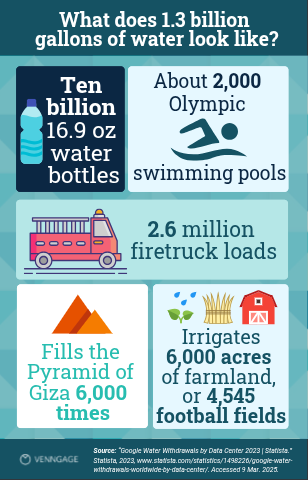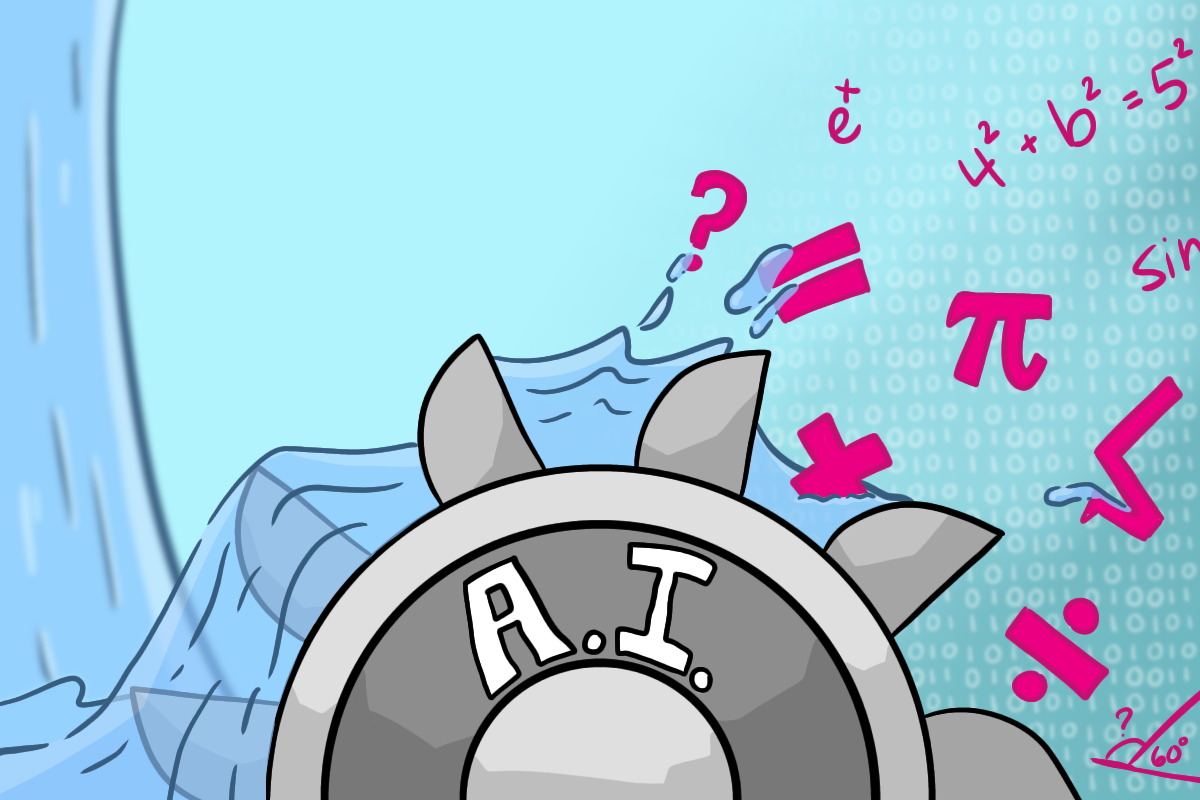Did you know that the artificial intelligence industry is expected to grow to around $1.85 trillion by 2030? AI has been revolutionizing industries such as healthcare and transportation by improving data analysis and automating routine tasks. This newfound convenience has led to major growth in AI’s role in industry and society.
But beneath AI’s promising potential lies severe negative environmental effects that are often overlooked. As more and more tech giants look to capitalize on the AI craze, Iowa has been feeling the effects of AI’s water and electricity usage.
Artificial intelligence, or AI, refers to the capacity of computers or machines to perform tasks that typically require human intelligence, tasks such as speech recognition, problem-solving and content generation. AI systems are designed to analyze large quantities of data, often housed in data centers, which allows them to establish decision-making capabilities.
A data center is a building that houses multiple computers involved in data storage, transmission and processing, all of which are necessary for AI’s data consumption. Along with states like California, Texas and Virginia, Iowa specifically has seen large growth in the number of data centers built in recent years. As of 2025, Iowa has 98 data centers from companies like Google, Microsoft, Meta, Apple and more.
Water use
Sifting through large amounts of information and formulating an answer in just a matter of seconds causes large amounts of electrical activity and thus heat within AI systems. To prevent processors from overheating, cooling systems are used inside the computer systems.
Many AI cooling systems are liquid based, due to the fact that water absorbs heat more efficiently than air. However, these systems often consume exorbitant amounts of water. According to Statista, in 2023, Google’s data center in Council Bluffs, Iowa used about 1.3 billion gallons of water, the highest amount of all Google data centers in the United States.

Water consumption like this damages Iowa ecosystems and negatively affects water access for citizens across the state. According to the National Integrated Drought Information System, on Mar. 25, 2025, 55.3% of Iowa is in a moderate drought, with an additional 1.2% in a severe drought area. While much of this can be attributed to climate change, the water needed for AI systems worsens access for Iowa citizens.
Reflecting on this complex issue, West High AP Environmental Science teacher Christopher Murdock shares his perspective on water use and the overall environmental effects AI can have. His largest problem with AI cooling systems is how they divert water away from other important uses.
“Our limited supply of water, instead of being used for agriculture and other things that we [need], we’re now having to divert more of that water to AI,” Murdock said.
Being a new technology, Murdock believes the majority of people haven’t yet recognized the lasting effects AI will have on the environment.
“I think right now we’re still in that honeymoon phase where we’re not really realizing the consequences of [artificial intelligence], but that’s something that we’re going to have to figure out sooner than later,” Murdock said.
As an example, student Delores Hubbard ’27 admits that while she occasionally uses AI, she was unaware of the negative environmental effects it has. She mentions that the criticisms she hears regarding AI generally focus on job loss and the potential for plagiarism, as opposed to any harmful effects on the environment.
“When we talk about AI, my first thought isn’t the environment. I don’t link the environment and AI together. But I would rather have people have water than AI because I think AI is beneficial but not necessary,” Hubbard said.
Energy use
An important issue associated with AI centers is the energy needed to build and run the servers. The two main problems with the growing need for energy are that it increases carbon emissions and puts a strain on Iowa energy providers.
To maintain a competitive edge, companies need to increase the speed at which their centers are built, which leads to a higher dependence on traditional energy sources like fossil fuels. As mentioned in the 2024 Iowa Statewide Greenhouse Gas Emissions Inventory Report, carbon emissions are expected to increase by around 100 million metric tons in 2025 due to the growing energy demand generated by Iowa data centers.
Another problem with this energy consumption is that, because AI has expanded so rapidly, energy producers haven’t had time to adjust to the rising demand. Iowa’s electricity infrastructure faces significant challenges in meeting the energy requirements new data centers need. Stressing electrical grids can lead to faster deterioration of important electrical infrastructure and can even cause energy blackouts.
Murdock believes it’s important to focus on developing more sustainable ways to provide energy and to promote a shift away from fossil fuels. Instead of using AI for everything, he promotes a more conscious and minimal use of AI for necessary things, not simply out of convenience.
“We are using fossil fuels to power the computers, and so I think it’s really important that we are intentional in how we are using it, and not just free-wheeling,” Murdock said.
But Murdock also recognizes the benefits AI can have if more sustainable energy solutions are created.
“I think what makes it tricky is there’s a lot of good that AI can do to solve a lot of our environmental problems,” Murdock said. “But it’s that double-edged sword where the thing that might help us create a solution for the future is actively pushing us closer to that cliff’s edge.”
Conclusion
As AI’s growth becomes faster, it is crucial for Iowa citizens to weigh its environmental costs. The strain we put on water and energy supplies will leave lasting effects on Iowa’s environment and the people who depend on it. Continuing droughts and expanding carbon emissions due to heightened energy consumption highlight the need for more sustainable solutions.
Although AI does have a negative impact on the environment now, it’s important to recognize the benefits AI can have for our society. AI isn’t inherently bad, it’s how and when society chooses to develop and use it that truly decides its impact on the world. Murdock believes the more important thing to do is to stay hopeful and optimistic for the future AI can have.
“We’re gonna get [things] wrong. We’re gonna look back and probably realize in 5 to 10 years that we maybe didn’t need to do things the way that we did. But I think the important thing is that we continue to try,” Murdock said.



































